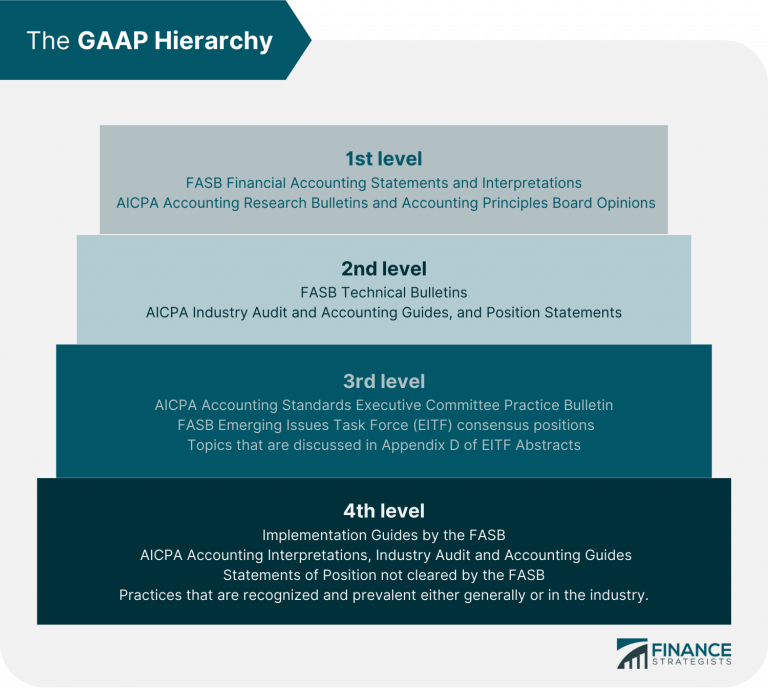events-new.ru
Community
Gaap Procedures

The 10 GAAP Principles · 1. The Principle Of Regularity · 2. The Principle Of Consistency · 3. The Principle Of Sincerity · 4. The Principle Of Permanence Of. This blog delves into understanding the accounts payable generally accepted accounting principles and how adhering to GAAP rules enables businesses to. Learn the fundamentals of Generally Accepted Accounting Principles. Discover key principles, compliance, rules, and why GAAP matters for your business. Generally Accepted Accounting Principles (GAAP) ensure that businesses keep honest and current income statements, balance sheets, and accounting documents. GAAP is a defined set of rules and procedures that needs to be followed in order to create financial statements, which are consistent with the industry. What are the end of the fiscal year procedures to ensure GAAP compliance? ◇ How is GAAP monitored internally and by whom? Resources. ◇ OVC TFMC Basis of. FIN - Generally Accepted Accounting Principles (GAAP) Hierarchy · Purpose. The purpose of this administrative rule is to establish minimum standards for. The GASB establishes accounting and financial reporting standards for US state and local governments that follow generally accepted accounting principles (GAAP. Its content includes informative rules, policies, and procedures applicable to CPAs and may be used as a training medium. It is a practical reference that. The 10 GAAP Principles · 1. The Principle Of Regularity · 2. The Principle Of Consistency · 3. The Principle Of Sincerity · 4. The Principle Of Permanence Of. This blog delves into understanding the accounts payable generally accepted accounting principles and how adhering to GAAP rules enables businesses to. Learn the fundamentals of Generally Accepted Accounting Principles. Discover key principles, compliance, rules, and why GAAP matters for your business. Generally Accepted Accounting Principles (GAAP) ensure that businesses keep honest and current income statements, balance sheets, and accounting documents. GAAP is a defined set of rules and procedures that needs to be followed in order to create financial statements, which are consistent with the industry. What are the end of the fiscal year procedures to ensure GAAP compliance? ◇ How is GAAP monitored internally and by whom? Resources. ◇ OVC TFMC Basis of. FIN - Generally Accepted Accounting Principles (GAAP) Hierarchy · Purpose. The purpose of this administrative rule is to establish minimum standards for. The GASB establishes accounting and financial reporting standards for US state and local governments that follow generally accepted accounting principles (GAAP. Its content includes informative rules, policies, and procedures applicable to CPAs and may be used as a training medium. It is a practical reference that.
GAAP stands for Generally Accepted Accounting Principles and refers to the standard accounting rules regarding the preparation, presentation, and reporting of. GAAP principles are a combination of authoritative standards (set by policy boards) and the commonly accepted ways of recording and reporting accounting. This blog delves into understanding the accounts payable generally accepted accounting principles and how adhering to GAAP rules enables businesses to. GAAP refers to the rules and standards used for financial reporting in the United States. GAAP standards were developed by the Financial Accounting Standards. What are the 10 principles of GAAP? · Regularity. The business and accounting staff apply GAAP rules as standard practice. · Consistency. · Sincerity. · Permanence. GAAP, or Generally Accepted Accounting Principles, is the bedrock of financial reports and crucial to the smooth functioning of the economy. GAAP helps to regulate the accounting sector in accordance with comprehensive standards and principles. It makes an effort to unify and regulate the terminology. GAAP stands for Generally Accepted Accounting Principles and refers to the standard accounting rules regarding the preparation, presentation, and reporting of. The Generally Accepted Accounting Principles (GAAP) refers to a framework of accounting standards, principles, and procedures used within the United States. GAAP is an attempt to standardize and regulate the assumptions, methods, and definitions used in accounting across different industries. Standards & Guidance The FASAB Handbook of Accounting Standards and generally accepted accounting principles (GAAP) developed for federal entities. Exclusive Not for profit US GAAP Interpretation and application of generally accepted accounting principles. International Corporate Procedures (Lexis+). GAAP, or Generally Accepted Accounting Principles, is the bedrock of financial reports and crucial to the smooth functioning of the economy. What Are Generally Accepted Accounting Principles (GAAP)? GAAP brings together different authoritative standards put in force by policy boards. Over the years. Exclusive Not for profit US GAAP Interpretation and application of generally accepted accounting principles. International Corporate Procedures (Lexis+). This Decentralized Departments' Supplement (Supplement) to the FY GAAP Instructions (GAAP policies and procedures. This guide relates to the. The Four Financial Statements Required for GAAP Compliance. There are four different financial statements that GAAP requires companies to report: income. The primary purpose of GAAP is to ensure that financial information is reported on a consistent and comparable basis across all organizations. This consistency. GAAP is a term that refers to a set of accounting rules, standards and practices used to prepare and standardize financial statements that are issued by a. Accounting Best Practices For Your Business · Principle Of Regularity: Regularity is defined as conformity to enforced rules and laws. · Principle Of.